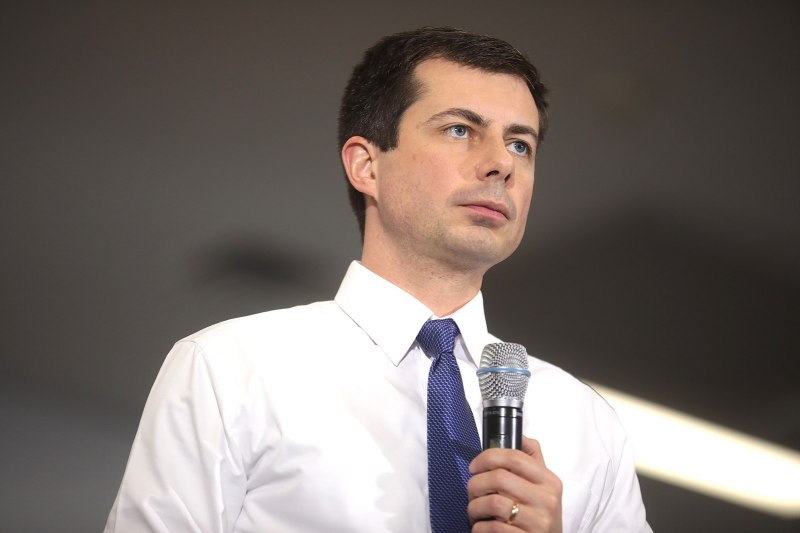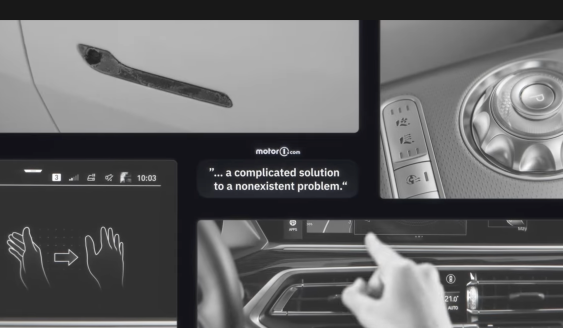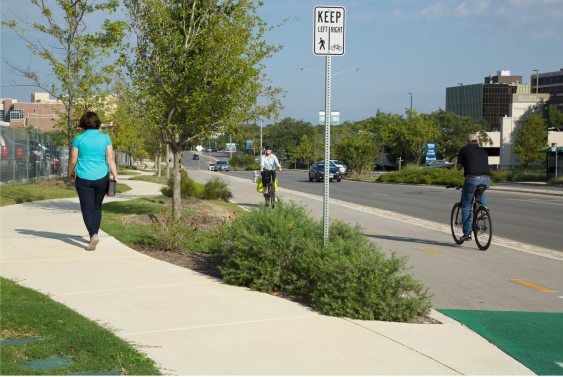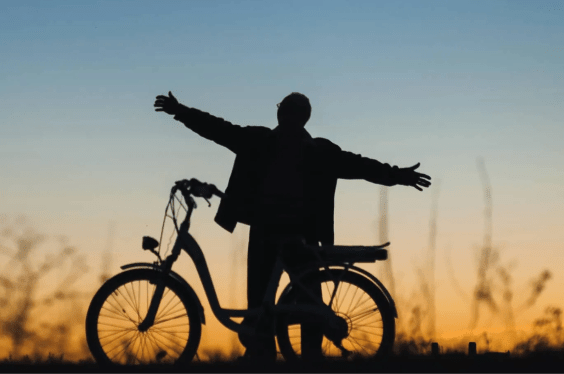Finally, it's time to meet the actual Pete Buttigieg.
Thirteen Republicans voted against the former South Bend mayor's nomination for Secretary of Transportation on Tuesday on the grounds that Buttigieg is an urbanite climate radical who will leave rural America behind. (Sen. Tommy Tuberville of Alabama told Fox News that he was "concerned Buttigieg would prioritize urban areas over the very real needs of our rural communities, while Ted Cruz of Texas said through a spokesperson that Buttigieg would work "in lockstep" with Biden’s "radical energy policy.")
Meanwhile, plenty of left-leaning advocates have been worried for months that Buttigieg can't possibly understand urban transportation because of where he comes from. He's just a small-town hick who's never even heard of a subway system, this line of thinking goes.
has pete buttigieg even seen a train before
— eleanor לילה (@O0100110) December 15, 2020
So which is it? Is Buttigieg a hayseed Hoosier who wouldn't know a headway from a harvester, or a political ecoterrorist hellbent on leaving rural American in the lurch and laughing all the way to the Amtrak station?
The answer, of course, is neither: he's a guy from South Bend.
Buttigieg's signature Smarter Streets initiative, which he highlighted with particular pride during his confirmation hearing, merited a shrug from some big-city activists who wondered what all the fuss was about a handful of bike lanes, curb extensions and roundabouts that cost just a fraction of what bigger cities spend on ending traffic violence ever year. Alissa Walker, urbanism editor at Curbed, noted that while Buttigieg has a firm grasp on the interwoven transportation crises that impact Americans, but also noted "as the mayor of a city with a population smaller than the number of people who enter the Times Square subway stop each day, [he] certainly does not have any qualifying administrative experience." She also wondered if he would execute Biden's ambitious climate plan "from the backseat of an SUV."
There is so much work ahead of us, but I am deeply optimistic about the future of American travel. pic.twitter.com/O2ax5kx9kX
— Secretary Pete Buttigieg (@SecretaryPete) February 3, 2021
To break the fourth wall for just a moment, I know a little about South Bend, because it's part of my history, too. Half of my family has deep roots in the clump of small counties centered around South Bend that are collectively known as Michiana; my mother permanently returned to live in her hometown of beautiful, minuscule Dowagiac, Mich. almost a decade ago, and no, it's not pronounced like you think. South Bend, population 102,000, is the "big" city my family goes to when they want to see a movie, eat sushi, and for a few of them, go to college. I have flown into its nine-gate airport and taken the South Shore line to family holidays (yes, Twitter, there is, in fact, a train) more times than I can remember. And save for a few collegiate years, I've spent my entire life in other small midwestern towns, before settling in a shrinking midwestern city.
And over the years of writing about urban issues and transportation policy, I've noticed that there are a few things that my peers in mega-cities just don't always get about cities like South Bend.
They don't fully grasp the fundamental difference between fighting for more protected bike lanes, and fighting for the first protected bike lane a city has ever built — or that Buttigieg's success with the Smarter Streets initiative represented an extraordinarily significant (and hard-fought) $25-million transformation that many locals credit with single-handedly bringing a ghost town back to life.
They can't quite grok what it means to re-urbanize a neighborhood that still has the bones of a complex streetcar system still buried under its asphalt, but has fewer than 50 buses today, and zero federal money available for more.
And they can't possibly understand the unique challenges of transforming the streets in a Democratic city whose Republican state government is so stingy on transit that it legally requires public transit agencies to find private donors just to keep the buses running, when it's not threatening to strip them of their regional planning authority altogether.
These goons are trying to dismantle every inch of progress this city has made since being hollowed out by urban renewal; everything that has allowed Indianapolis to become successful. They just want a parking lot for Colts games and a road to the airport, residents be damned.
— NEOM DEI Engagement Coordinator (@nickhasthoughts) February 3, 2021
That's not some dig against "coastal elites," by the way; I don't have sustained, lived experience of their communities, either, and I certainly don't expect you to know the nuances of the truly bananas transportation policies of the Midwest. (And of course, it should not go without saying there are elements of BIPOC Midwestern experiences that neither I nor Buttigieg can never fully understand as White people.) But when it comes to transportation, there is something useful about hailing from a small, Midwestern city that's fundamentally different than living in a large metropolis or a tiny town – and that perspective has historically been underrepresented at the USDOT, despite the fact that huge numbers of Americans live in these in-between places.
Certainly, 83 percent of Americans reside in what the census qualifies as urbanized areas, but only a relative handful (7.9 percent) of them live in the 10 mega-cities that boast populations over a million people. Slightly more (8.3 percent) are residents of the 199 micro-cities that hover somewhere between 100,000 and 200,000 residents: not quite big enough to be considered a metropolis, but definitely not a quaint little village. South Bend is among them.
In the Midwest, many of those micro-cities are blue dots in red states, or deep-blue dots in faintly purple ones. A lot of them are cities that still have the kind of human-scaled, walkable downtowns that urbanists daydream about — yes, South Bend has one of those, too — that are directly adjacent to strip malls and autocentric roads that past leaders were told would bring prosperity, and instead gave residents a quick route to a single family home on a large lot the next town over. A whole lot of them are built around a college or university, and are constantly juggling the tricky transportation realities of moving a large seasonal population of youngsters who usually don't bring their cars to campus in a city that's otherwise dependent upon automobiles to get around. A ton of them have robust activists who have fought tirelessly for antiracist transportation policies and too often gone unheard.
In its most cartoonish depiction, our national transportation dialogue boils down to the tension between two purposes: urban transportation, which exists to move people safely regardless of how they get around, and rural transportation, which exists to move large amounts of goods as quickly as possible. In that binary view, urban transportation is badly losing the battle for scarce federal funds, and the pittance it does receive is spread thinly between the handful of metropoli that have miraculously forged multimodal networks despite it all, and small cities that hope to someday do the same — sustaining neither, and satisfying none.
BUTTIGIEG RIDES NYC SUBWAY- STILL MON0175- Democratic presidential candidate Mayor Pete Buttigieg met with Rev. Al Sharpton today for lunch at Sylvia’s in New York City. Eschewing limos and cars, Buttigieg traveled up to Harlem New York-style... on the subway. pic.twitter.com/Rbr56IKDLr
— CBS Newspath (@cbsnewspath) April 29, 2019
But perhaps no urban form better demonstrates why that binary is a false one than the micro-city and large town, which is neither urban nor rural – or, more accurately, is most notorious for marbling the two uses together to astonishingly deadly effect. And perhaps no DOT head in recent memory represents a solution to that historic problem than Secretary Buttigieg, a small-town mayor who's experienced life in a whole lot of transit-rich cities. Say what you will about Buttigieg, but his track record in South Bend shows that he recognizes the power of small, inexpensive solutions like curb extensions and bike lanes — and his track record as a candidate shows that he also knows the power of transformative investments into transit. (Reminder: this was the guy who wanted to increase the budget of the FTA 13 times over while he was a candidate — something he can now pressure Congress to do in its next infrastructure package, if Biden doesn't tamp down his ambitions.)
There are plenty of reasons to criticize Pete Buttigieg, from his rocky record on issues impacting Black Americans to his involvement in an effort to privatize a key element of our transportation landscape: the U.S. Postal Service. It will be essential for advocates who envision roadways free of traffic violence, state and vigilante violence against people of color, and car dependence itself to hold him to account, and expand his vision for what a great transportation network looks like.
But let's put to bed the notion that our new Secretary is unqualified because his transportation vision was shaped by life in a small city. Because if anything, that experience makes him better attuned to what it will actually take to make American roadways more livable, equitable, and safe, in the places where most Americans actually live — and as a midwesterner, he knows how to do it, if necessary, on little more than a dime.






